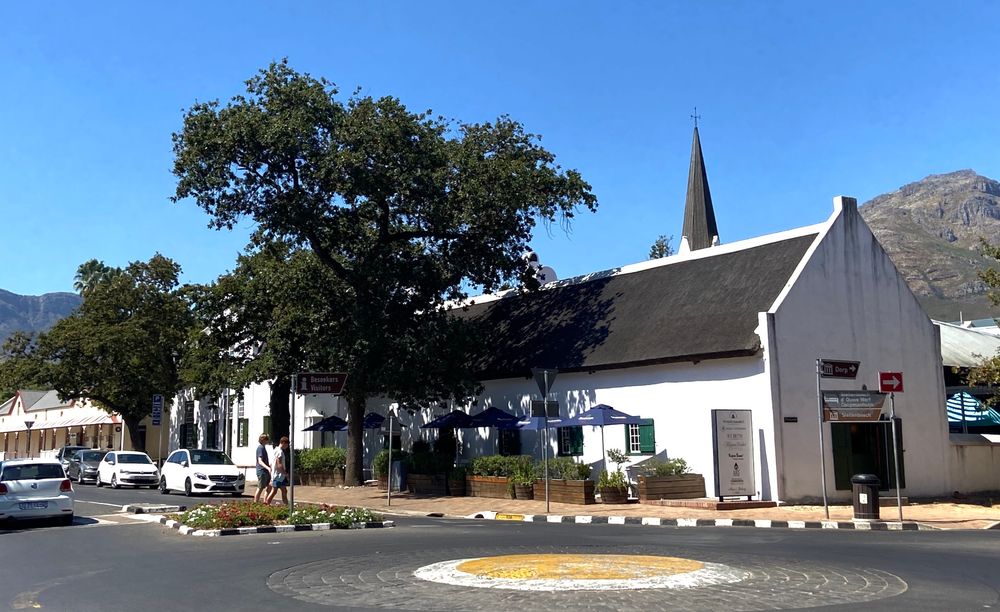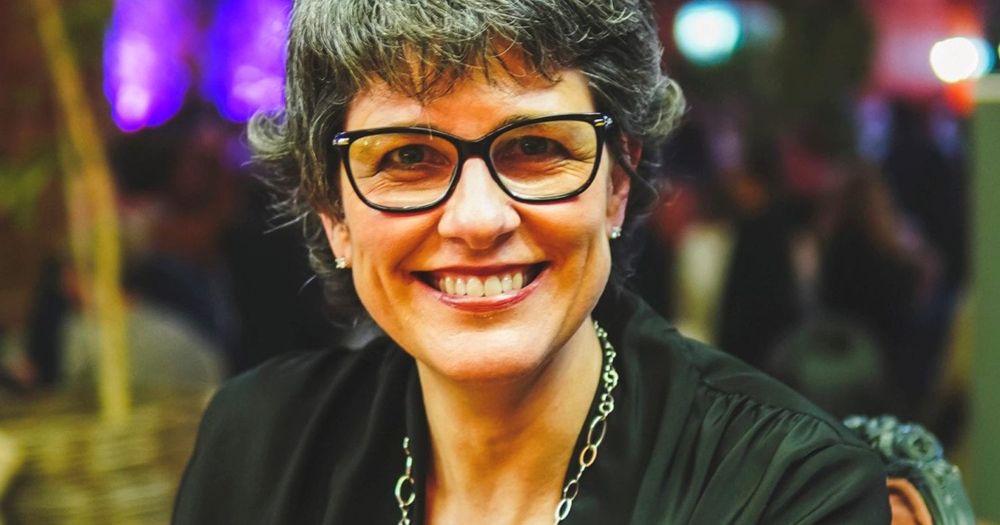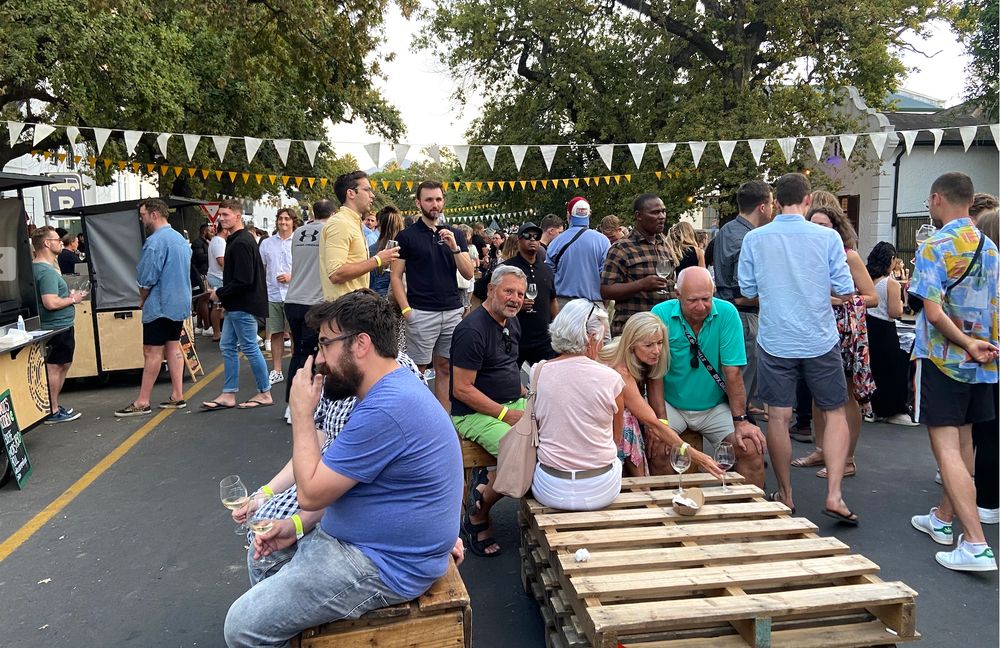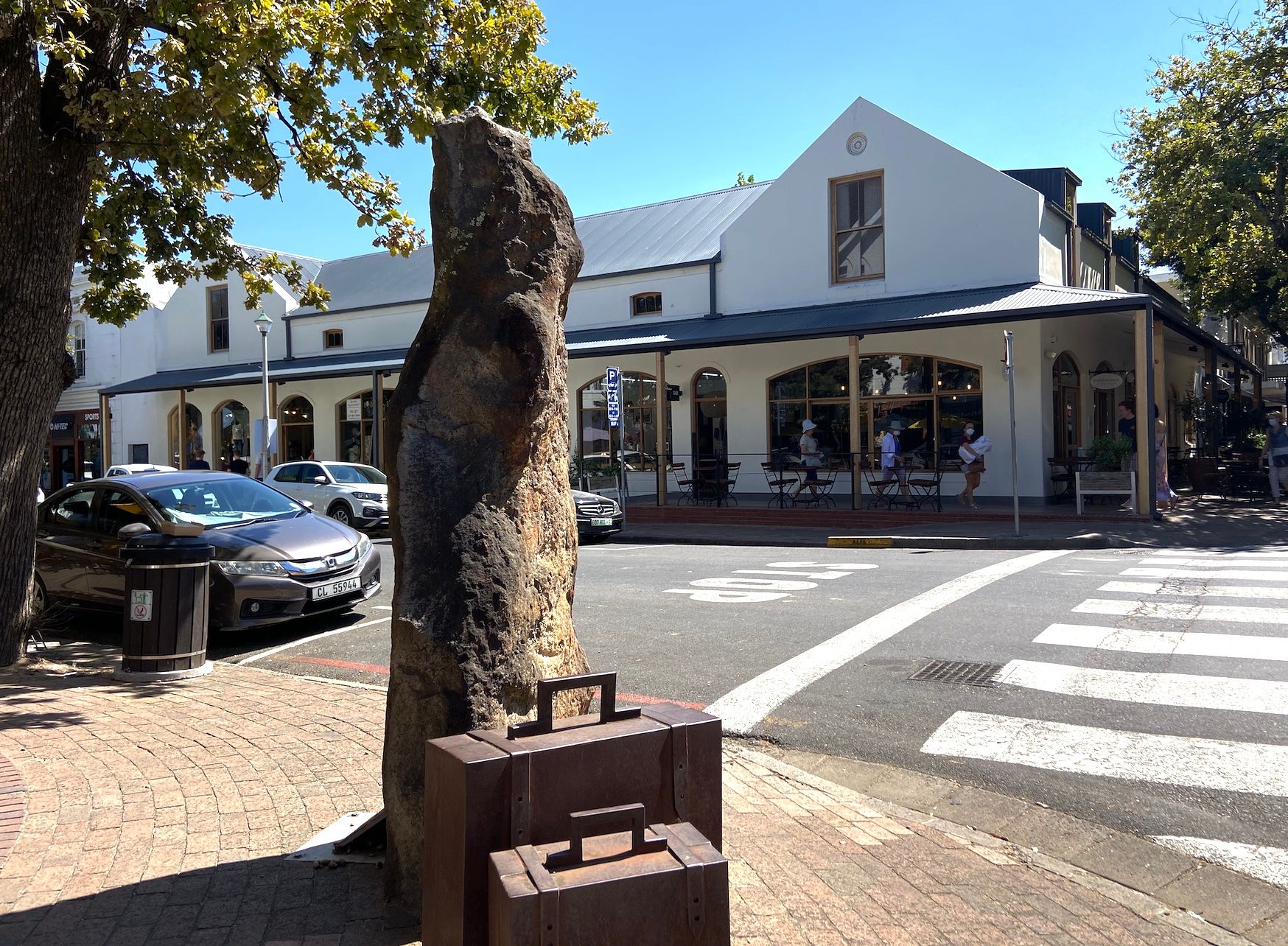This is the third article from the special Stellenbosch Business Report published by The Buyer for the Stellenbosch Wine Routes that examines all the latest trends and shares the key insights from this still innovating, influential wine region.
Click here to download the full report.
“Stellenbosch is so big and diverse we have to approach the marketing and promotion of the region and wine farms in a holistic matter but with well-structured focus points. By us all working together we can truly be a powerful force.”
That’s the clear message from Elmarie Rabe, general manager of Stellenbosch Wine Routes, as she reflects on the new combined wine and tourism approach that Stellenbosch now has. Stellenbosch Wine Routes was a founding members of the newly created tourism body, Visit Stellenbosch and this is the first time in Stellenbosch’s long history its wine and tourism sectors have worked as one for a common goal.

The town of Stellenbosch has been revitalised post lockdown with a number of new bars and restaurants opening up
Such a move is perhaps long overdue when you consider tourism, or wine tourism in the case of Stellenbosch, as this sector’s contribution to GDP is significant and the Stellenbosch Winelands is the second biggest visited area in the Western Cape, after Cape Town.
Crucially most of this tourism boom is at the premium end of the market and being supported by the large number of foreign investors that have come into the region over the last decade, buying up prestige wine properties and looking to offer a high quality tourism packages as well as award winning wines.
“Stellenbosch is proven to offer excellent investment potential and the reputation of the region’s wines, certainly goes a long way to position StellenboschThey would not be coming here if they did not see it as a premium wine region,” says Rabe.
Professionalism
Stellenbosch Wines Routes member, Ross Sleet and managing director of Rascallion Wines, says of the changes being made: “In the past lots of wine farms did tourism, but not to a very high level. Now it’s completely different. We are now seeing professional wine tourism, where you need a quality wine set up, but you also need quality tourism and the food offer to go with it. That is now very important in the region.”
“Wine tourism has improved immensely,” adds Rabe, particularly in terms of the number of farms now offering a culinary experiences and quality accommodation, alongside the traditional cellar door and wine tour operations.

Jeannette Momberg says she is delighted that the tourism and wine sides of Stellenbosch are now working together
Jeanneret Momberg, who heads up Visit Stellenbosch as its chief executive, is delighted, but not surprised, the new united body has been able to make such an impact in only a short period of time. She is ideally placed to make her mark having previously been deputy chair of Stellenbosch Wine Routes.
“It just makes complete sense for us to be working like this – and it’s operating brilliantly. Wine is the main reason people come to Stellenbosch, and now we are able to collectively offer them a first class tourism and hospitality experience too. We have such a powerful message.”
“Putting all elements of marketing Stellenbosch into one body has worked a charm,” says Jasper Raats, managing director and cellar master of Longridge Wine Estate. “Five to 10 years ago we were behind Franschhoek. Not any more.”
He believes the huge focus and momentum there has been on the younger generation of winemakers in Swartland has actually been good news in that it has woken Stellenbosch up, from top to bottom, and there is now that “collective effort” to “pull up our socks and do better”. “We needed that competition to help us re-focus.”
Momberg also admits it was not previously possible to know how many of the people visiting the farms in the area, were also staying in Stellenbosch and enjoying its restaurants and the tourism on offer. Now their combined approach means they can plot, plan, analyse and make sure they are offering as comprehensive wine and tourism experience that they can.
Raising standards and professionalising the whole organisation from top to bottom. Helped also by the fact that respected wine figure, Mike Ratcliffe, is chair of both Stellenbosch Wine Routes and Visit Stellenbosch. Ensuring a common purpose is followed at all times.
He says: “Together, we are stronger. By uniting the efforts, expertise and resources of wine and tourism, we will unlock the incredible potential that Destination Stellenbosch has.”
Lockdown investments

Perfect location for a wedding on the Blaauwklippen estate
The prolonged lockdowns over the last two years have also given farms the space to upgrade their properties and put in place better tourism facilities. Time and again producers talk of the “rebirth” that has taken place in the region as so many businesses have been re-imagined to ensure they are not left behind.
The recently re-launched Blaauwklippen estate is a classic example of the level of investment that is going into Stellenbosch. One of the region’s oldest farms, dating back to 1682, it was bought in 2018 by a consortium of South African investors who have spent the last four years upscaling every aspect of its business. It now attracts thousands of visitors every weekend to enjoy picnics and lunches and walks in its extensive, beautiful grounds.
So determined was the new team behind Blaauwklippen to have an offer it could be proud of it even went as far as removing all its products from the market in 2018, explains chief executive, Ben-Carl Havemann. It is only now releasing wines back into the market that it believes match the highest levels of quality it wants the estate to be famous for across all the wine, food, accommodation and tourism services it provides.
He says the pandemic has given wine farms across the region the time to get their hospitality and wine offer just right.
“Those farms are that are just doing tastings are being left behind,” he adds. “Customers are now looking for something more.”
Drive around Stellenbosch now and you can count the number of marquees and special venues that have been set up to host weddings and events with the backdrop of Stellenbosch and its never ending valleys and mountain ranges as a backdrop. Some are even putting on open air opera concerts and attracting major music acts to the area.
Major recovery
It is noticeable an historic estate of the scale of Blaauwklippen is working hard to invest and get its reputation and standing right first for the local market.
That local first approach is one that has been repeated across the region and reflects the huge response that Stellenbosch has had from its local community during and post lockdown.
The premium tourism and wine that is now on offer is even more remarkable considering the region has effectively been shut for the best part two years.
Prior to lockdown 52% of Stellenbosch’s visitors came from overseas and 26% from the rest of South Africa. So even when restaurants, bars, and farms were able to open up again they could only expect to attract people from the local area.
Thankfully the local community has rallied like never before behind its “Stellenbosch Unite” and “SupportLocal” initiatives driven by Stellenbosch Wine Routes and Visit Stellenbosch that started in lockdown feeding hundreds of thousands of people from soup kitchens and food stations.

Tourism and wine are natural bedfellows like at the weekly street festival that takes over Stellenbosch in key parts of the year
It then progressed to what was known as the “Stellenbucks” restaurant rewards scheme that saw R1.7m raised from local private investors to fund a restaurant rescue package that encouraged people to eat out by giving them “Stellenbucks” to do so. It meant you were able to go out using the fund, via an app (Snapscan), and then get half the amount paid back from your bill to pay for another meal on another day.
The work that Stellenbosch Wine Routes and Visit Stellenbosch have been able to do together to get Stellenbosch back on its feet and motoring again shows how powerful working as one has been.
“It shifts your reality and makes you super grateful for what you have,” says Momberg. “We have shownresilience and commitment to all work together for a greater goal and a greater good. It was initially to feed people and support the local community. The next step was to see how we can help the community as a whole. Which is where the Stellenbucks scheme made such a difference.”
“But it also had to make hard commercial sense,” says Sleet. “It had to work for the the hospitality sector as well as wine farms.”
The pandemic has also made it crystal clear that Stellenbosch needs to invest in a wine and tourism strategy that is sustainable 12 months of the year and not just rely on tourists, or making most of its money in the intensive summer months, says Momberg. If it is to support a premium tourism economy it needs to also attract and engage both the local Stellenbosch and wider Cape Town community, and appeal to South Africans across the country, she adds.
Raats believes it is well on the way to doing that: “What is particularly exciting about what is happening in Stellenbosch town is that is all happening without a massive number of tourists around. It is just this great organic movement, which means it is sustainable and not just relying on tourists,” he adds.
Capital of food

The culinary scene in Stellenbosch has come on leaps and bounds
It’s not just in the wineries where new tourism and hospitality investment is being focused, but in Stellenbosch town itself. Anyone who has not visited since before the pandemic is in for a welcome surprise with a number of new wine bars, restaurants and high end gastronomic venues opening up.
Stellenbosch’s reputation as a culinary attraction in its own right is attracting top name chefs from Cape Town to open up new sites. Like the historic post office, for example, has been re-invented as Post & Pepper from award winning restaurateur and chef, Jessica Van Dyk, and manager Dimitri Hadzigrigoriou.
As Mike Ratcliffe says: “Post & Pepper builds on an accelerating trend of young, talented and ambitious chefs moving to Stellenbosch to push boundaries with exciting new eateries in what is now indisputably the innovation capital of food in South Africa.”
Climate and social change
A central part of Stellenbosch’s wine and tourism strategy is to do what it can to lead the way in South Africa on driving real action on both climate and social change. Ratcliffe says it hopes its combined efforts can help raise the economic level of the region and therefore drive job creation, skills development and environmental change as a result.
He explains: “We are committed as the wine and tourism ecosystem of Stellenbosch to drive environmental protection and social cohesion and foster good principles among all our stakeholders.”
Its challenge now is to continue to act as a “living tourism laboratory” and ensure it is continuously testing and trialling new initiatives that that help address and tackle the region’s “pressing social and economic issues,” he adds.
“Wine and tourism can be a force for good,” says Momberg.
History and traditions

The Muratie Wine Estate is as much an historical museum as it is a living winery
It’s also Stellenbosch’s long history that attracts people to the area and the chance to visit farms that back to the last 1600s. The Muratie Wine Estate, for example, dates back to 1685 and has been turned into a living museum by owner Rick Melk, whose family used to own the property 120 years ago, before his father was able to bring it back into family ownership in 1987.
He is proud of telling the story of the estate both through the old vines and story on the labels, but how the farm has been set up to receive visitors so that they can walk through the houses – some of which have been converted into art galleries – and see the old concrete tanks surrounded by old family photos maps and winemaking equipment whist they eat in the winery’s restaurant. Melck says it all helps bring the vines and wines to life and he hopes people feel like they are stepping into their little community when they come.
“We want people to come and spend the day with us. Come to the restaurant and taste wines at the cellar door, then visit the art galleries we have and take one of our walking or cycling tours, or go for a run,” he says.
Stellenbosch as an experience in itself.










































